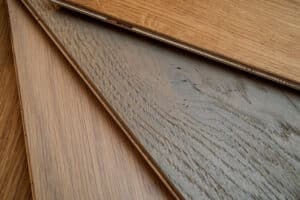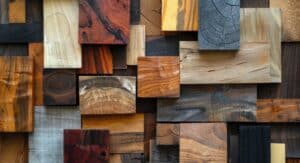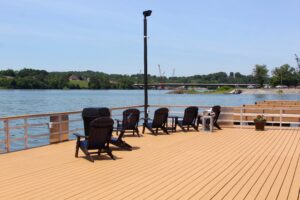Rainy weather can be a challenge for any construction project. However, with the right kind of lumber, you can ensure your building stands up to even the wettest conditions.
This blog post will discuss the best lumber choices and why they’re superior for tropical and humid weather. We’ll explore pressure-treated lumber, cedar lumber, redwood lumber, and composite materials – all designed to stand strong in wet environments. So if you want your structure or outdoor decking to last through torrential downpours without issue, then read on.
Pressure-Treated Lumber
Pressure-treated lumber is an excellent choice for outdoor projects due to its natural resistance to rot and pests. Preservatives, which guard against dampness, termites, fungi, and other organisms that damage wood, are applied to the lumber through a pressure treatment process that involves forcing the chemical preservative into the wood fibers using high pressure. This ensures maximum protection against decay and insects.
Cedar Lumber
Cedar lumber is also popular for outdoor construction projects as it is naturally resistant to deterioration and insect damage. Cedar contains oils that act as repellents to insects such as termites, carpenter ants, and beetles. Additionally, cedar’s tight grain pattern makes it less prone to splitting or cracking when exposed to extreme weather conditions such as heavy rain or snowfall.
Cedar lumber withstands wet climates, making it an ideal option for coastal regions or areas that experience frequent rain. Cedar lumber can last up to 20 years in these environments without requiring additional treatments or maintenance.
In addition to its durability, cedar lumber has several aesthetic benefits that make it attractive for outdoor projects. Its rich coloration ranges from light yellow-brown to deep reds and purples, depending on the species of tree used in production. This variety gives homeowners plenty of options when selecting the perfect shade of cedar for their project needs. Additionally, its beautiful grain pattern adds texture and depth when applied correctly in a design scheme.
Tips for Working with Cedar
Due to its density, it may be challenging to shape precisely using ordinary tools, so specialized saw blades might be necessary. Secondly, since this kind of wood readily absorbs moisture, it’s advisable not to leave cuts exposed overnight if feasible. Lastly, always wear protective gear while cutting or sanding this material, as particles can become airborne, causing irritation if inhaled directly.
Cedar lumber is an excellent choice for any exterior building project with its combination of durability and beauty, all at an affordable price point. Maintaining cedar lumber is easy and will ensure it stands up to the elements for many years, making it a wise investment.
Redwood Lumber
Redwood lumber is an excellent option for exterior applications because of its inherent strength properties compared to other softwoods like pine or spruce. Redwood’s beautiful reddish hue adds visual appeal while providing superior protection against water absorption and warping over time due to its dense grain structure. Its natural resistance against fungus growth means you won’t have any worries about mold developing on your project either.
Redwood lumber is also ideal for outdoor construction, especially in damp conditions. Its natural resistance to decay and rot makes it suitable for decks, fences, siding, and other structures exposed to the elements. Plus, its dimensional stability means it won’t warp or twist when wet – a significant bonus if you’re looking for long-term durability.
Compared to pressure-treated lumber, redwood offers outstanding weather resistance and longevity performance. It’s also easier on the eyes than treated wood; its rich coloration adds a touch of elegance to any project. And unlike cedar or composite lumber, redwood doesn’t require sealing or staining after installation – saving time and money over the life of your project.
Composite Lumber
Composite lumber is an excellent option for outdoor projects in wet climates. It’s made from a combination of recycled plastic and wood fibers, making it highly durable and resistant to moisture damage. This makes it an excellent choice for decks, fences, siding, and other exterior applications that are exposed to the elements. Plus, composite lumber requires very little maintenance – no sanding or staining required.
Unlike traditional wood products like pressure-treated lumber or cedar/redwood lumber, composite materials won’t warp over time due to water exposure. They also don’t require any special treatments like sealants or stains either; all you need is a simple cleaning every now and then with mild soap and water.
Composite materials are significantly lighter than their wooden equivalents, making them simpler to move from one area to another without stressing over additional load on the truck bed or trailer. This means contractors can get their job done faster since less material is moved around during installation. And shippers have fewer worries when sending out orders because the lightweight nature of these composites makes them cheaper (and easier) to ship compared with heavier woods like oak or mahogany.
Call Harbor Exports For Your Next Project
Each option has its own advantages – and the experts at Harbor Exports can guide you to choose wisely based on your budget and needs.
For the best protection against rainy weather, look no further than our selection of high-quality lumber. Contact us today to learn more about how we can help you find the perfect solution for your project!
- About the Author
- Recent Posts
Brad Enfinger has been in construction for over 20 years and has been involved with every material from concrete slab to laying the roof on houses. Brad’s diverse experience has given him the knowledge needed to assist those with shipping building materials, whether it be a house, pole barn, deck, or a dock. Brad at Harbor Exports has anything for your building material needs and can export material all over the world.




